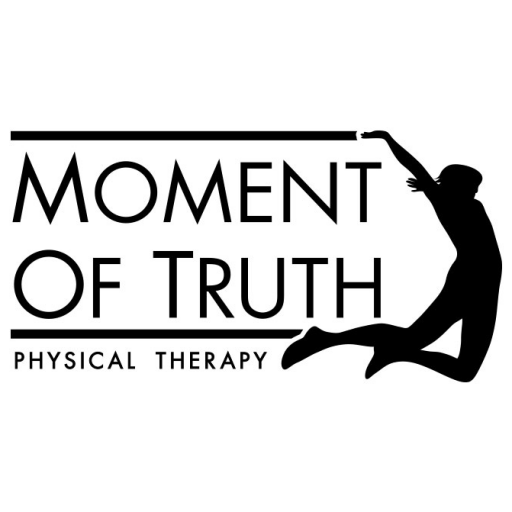Period pain is already uncomfortable, so when you throw “postpartum” in the mix, it makes everything ten times worst, right?
You may be relieved to learn menstrual discomfort for the first one or two cycles after having a baby is normal—but that doesn’t make it any more comfortable. If you’re experiencing postpartum menstrual pain, here are some reasons why this might be happening, as well as some tips to follow for alleviating your pain and discomfort.
Postpartum Menstrual Pain: What Is It?
After you’ve given birth, you’ll likely experience some (normal) bleeding for three to six weeks after delivery. Once this post-delivery bleeding has subsided, your period can return at any time. Some women don’t get their period for up to a year after delivery, but this is very uncommon. It’s more likely for your cycle to return six to nine months after giving birth.
Generally, the longer you go without your period after giving birth, the more painful and “vicious” your cycle will be when it returns. Often, breastfeeding can delay the onset of your postpartum period. Some mothers who exclusively breastfeed their babies don’t get their period back until a year or more after giving birth, but some have their cycle return 6–12 weeks later.
In summary, it’s not unusual for your first period after giving birth to be more uncomfortable than usual. However, after the first period, you should settle back into your “normal rhythm,” and the severity of your cycle should be just as intense as it was pre-baby.
Is Postpartum Menstrual Pain Normal?
After the first few cycles, your menstrual pain should return to the level that it was pre-baby. If you had long, painful periods before, you should still expect to have long, painful periods after giving birth. However, suppose your cycle was relatively normal and pain-free before having a baby. In that case, you should return to experiencing your “normal” period—minor cramping, bleeding for 4–5 days, and maybe some fatigue.
If you continually have postpartum menstrual pain beyond your normal pain levels during your cycle, this may be a sign of a deeper problem. Postpartum menstrual pain accompanied by digestive issues or irregular urinary or bowel movements is more concerning. These problems are often linked to core weakness or pelvic floor weakness.
Why Does Postpartum Menstrual Pain Happen?
It’s common to have some general discomfort when your cycle returns the first few times after having a baby for the following reasons:
Time Lapse
As we mentioned, it’s normal for your period to return to a “normal” level of discomfort when it comes back postpartum. However, after not having your period for almost a year or more, you may not remember how painful it was before—and it may come back with a vengeance!
It’s normal for your first (or even second) postpartum period to be painful and uncomfortable. However, if you’re still experiencing pain during your subsequent postpartum periods, it may be for one of the following reasons.
Scar Tissue
Depending on your delivery, you may be more likely to have painful postpartum periods. For example, scar tissue from C-sections or episiotomies can worsen postpartum menstrual pain.
Pelvic Floor
Pelvic floor muscles play an important role in supporting your body’s sexual function.
If your pelvic floor muscles are weak, when you ovulate and bleed, this can cause additional menstrual pain. You may also experience painful postpartum sex with weak pelvic floor muscles. It’s essential to keep your pelvic floor muscles strong to have pain-free periods.
What Can I Do to Alleviate Postpartum Menstrual Pain?
Depending on the extent of your period pain, there are several things you can do to return your cycle to a “pre-baby normal.” We’d recommend moving down this list and incorporating a few (or all) of the following steps to alleviate postpartum menstrual pain:
Maintain a healthy lifestyle.
Whether you’ve had four babies or have never been pregnant, one of the most important ways to guarantee a healthy, pain-free period for every woman is to maintain a healthy lifestyle. This includes nutritious foods, daily movement, adequate sleep, and plenty of water.
Staying well hydrated improves your blood viscosity, making the bleeding phase of your cycle less painful. Healthy foods and exercise can reduce inflammation and constipation, reducing the pain during your cycle. If you’re experiencing a significant amount of pain, a hot shower, heating pad, iron supplements, sleep, and relaxation may be what you need.
Invest in pelvic floor physical therapy.
If you can’t solve your menstrual pain with changes to your diet, exercise, and sleep patterns—you should consider tapping into the many benefits of pelvic floor physical therapy.
Your physical therapist will perform a pelvic health exam, and with the results, can help you heal damaged tissues, reduce inflammation with myofascial work, and repair adhesions and restrictions around the uterus and ovaries. When these problems are addressed, you may be surprised how quickly your period pain goes away!
Talk to your provider.
If you’re having debilitating postpartum mensural pain or experiencing heavy blood loss, especially after your second or third postpartum period, it’s always a good idea to talk to your medical provider.
Your provider can help you determine what’s causing your pain by running some tests, like an ultrasound or bloodwork or getting your hormones checked. Then, based on the results, they may be able to recommend a course of action to help you alleviate your postpartum menstrual pain.
Find a Solution for Your Postpartum Menstrual Pain with Moment of Truth Physical Therapy
Moment of Truth Physical Therapy offers tons of support to new moms experiencing postpartum menstrual pain. We can provide information on how to keep your body moving, well-hydrated, and fueled with healthy foods, and even connect you with a reliable provider for testing.
However, most commonly, we help women improve their pelvic health to experience pain-free periods—postpartum or not! We perform a pelvic floor exam that addresses tissue trauma, adhesions, scar tissue, inflammation, and more. Then, we guide you on the best breathing practices, stretches, and movements to heal your body.
Learn more about our pelvic floor physical therapy services in Peoria, AZ, to alleviate postpartum menstrual pain, so you can experience a pain-free period!


0 comments